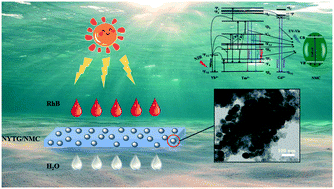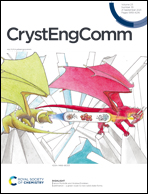Refine the crystallinity of upconversion nanoparticles for NIR-enhanced photocatalysis†
Abstract
A new photocatalyst was synthesized by a combination of the upconversion nanoparticle NaYF4:Yb, Tm, Gd (NYTG) and NH2-MIL-101(Cr) (NMC) to form NYTG/NMC. The heterostructure exhibited great stability and excellent photocatalytic activity through utilization of the wide spectrum from the near-infrared (NIR) to the UV-vis range. Compared with NMC, the photocatalytic performance was increased by 22% for rhodamine B (RhB) with the most suitable amount of Gd3+ ions and the ratio between NYTG and NMC. This could be attributed to the doped Gd3+ ions refining the crystallinity and hexagonal phase of NaYF4 by replacing the Y3+ ions, leading to an enhanced emission intensity along with an increased number of emitted peaks in the UV-vis region. The enhanced photocatalytic performance of NYTG/NMC was also related to the synergistic effects of the individual components, which facilitate the separation of electrons and holes. On the basis of scavenging experiments, the possible mechanism for photocatalytic degradation is proposed to uncover more clues for the further designs of new photocatalysts. This work suggests a pathway to enhance the emission intensity by refining the structure rather than by developing a core–shell structure.

- This article is part of the themed collection: Nanomaterials


 Please wait while we load your content...
Please wait while we load your content...